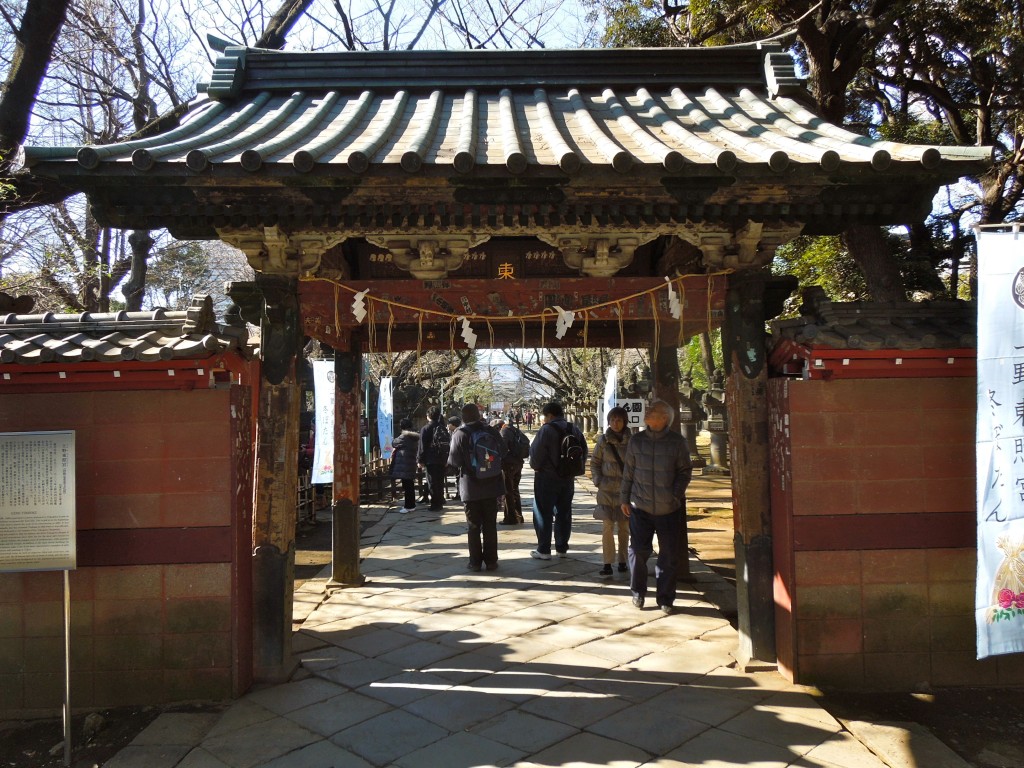
The Chinese-style entrance to Ueno Tosho-gu
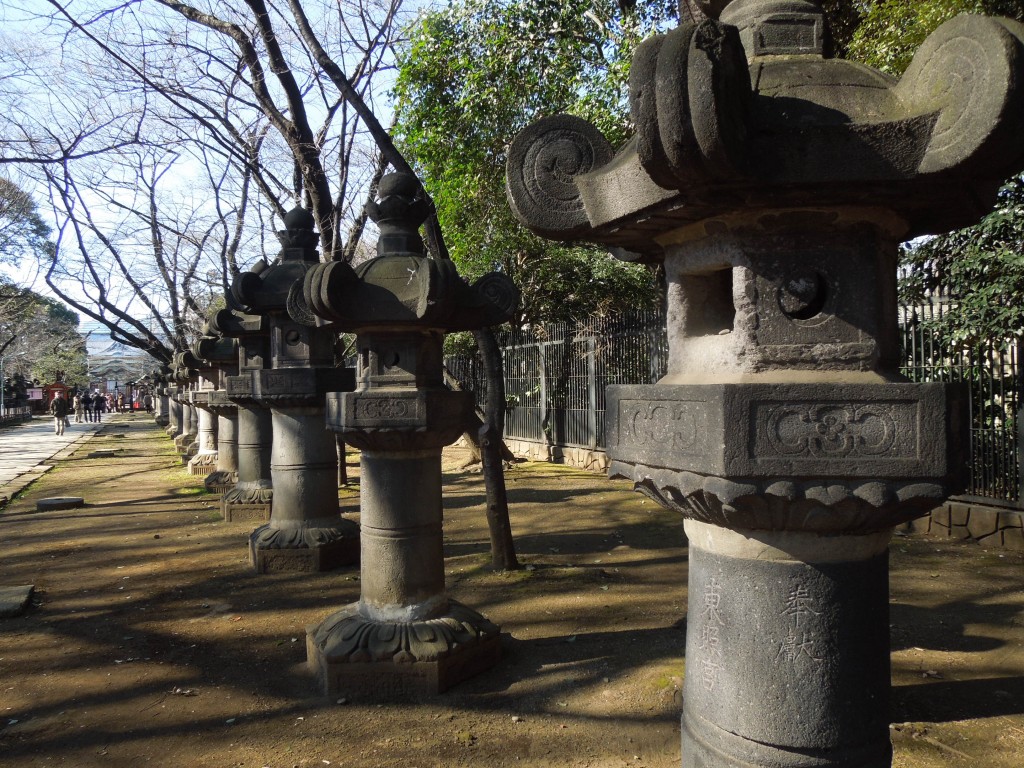
The lantern-lined path leading to the Worship Hall of Tosho-gu
Ueno Park in Tokyo is famous for several reasons. It houses many of the country’s top museums. It has a zoo. Its cherry blossom parties are legendary. And it was the site of a decisive battle in the Boshin Civil War, featuring Saigo Takamori (‘the last samurai’) whose statue stands near the southern entrance.
Not many people know, however, that the park also boasts three shrines. The most famous is the Toshogu Shrine, one of some 200 around the country dedicated to the spirit of Tokugawa Ieyasu (1543-1616). The shogun was deified after his death as Tosho Daigongen (Great Avatar of the Shining East). The shrine was originally built in 1627 by a Tokugawa follower, but was rebuilt in grander style in 1651 by the third Tokugawa shogun, Iemitsu, who glorified his grandfather.
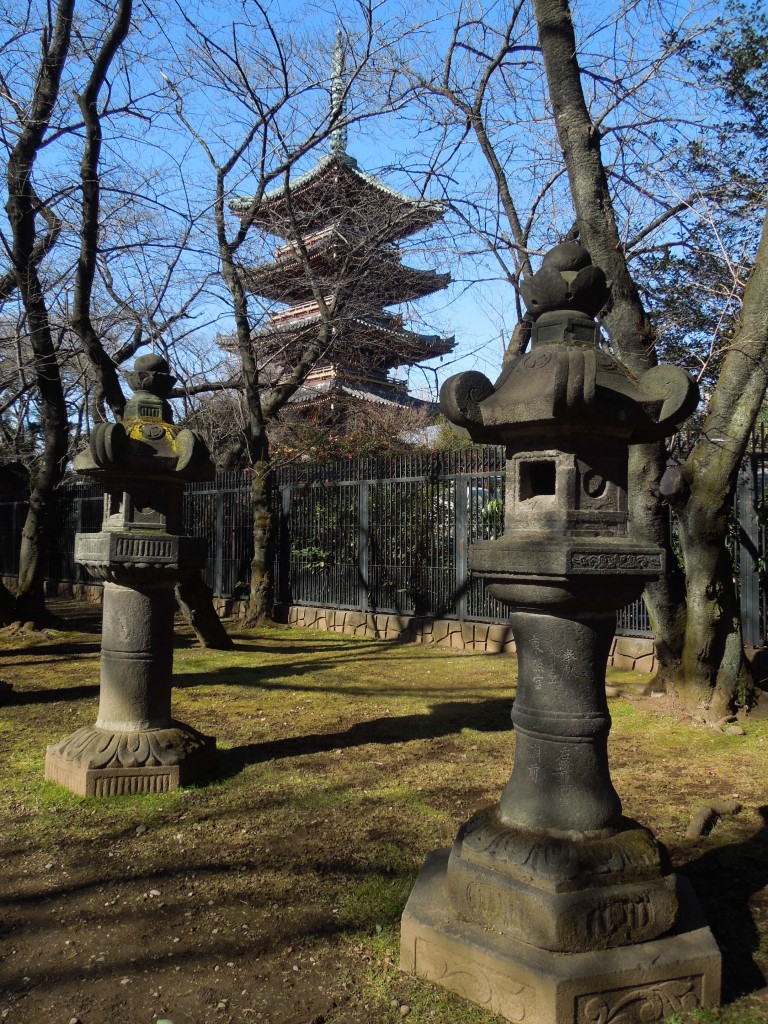
The pagoda which stands adjacent to Tosho-gu was once part of a large Shinto-Buddhist complex. Now it's in the grounds of Ueno Zoo, cut off from the adjacent Shinto shrine - an example of the ruthlessness of the separation of Shinto and Buddhism.
The shrine was built in an elaborate Gongen style, with separate structures for pilgrims and rituals. It was part of the sprawling complex of Kanei-ji Temple, which was a funereal temple for the Tokugawa (six shoguns are buried there).
The temple was badly damaged in the Boshin War and its Shinto components separated off by the Meiji government. The remainder was mainly destroyed in WW2, leaving the Shinobazu Pond and a five-storey pagoda to tell of the glory that once was.
Tosho-gu itself not only miraculously survived the Boshin War, but also fire and the Great Tokyo Earthquake of 1923, In all, it’s been partially rebuilt no fewer than 16 times, and the shrine is under renovation now (till December).
Sadly I had no chance to see the colourful carvings and lavish decorations (including Kano Tanyu paintings), but the grounds boast a botan garden (peonies) and an ornate Chinese-style gate prized as an important cultural asset.
There are 200 stone lanterns lining the approach as well as 48 bronze lanterns donated by daimyo (feudal lords), whose names are written on them. Rather than illumination, the latter are used for ritual purposes as sacred fires for purification.
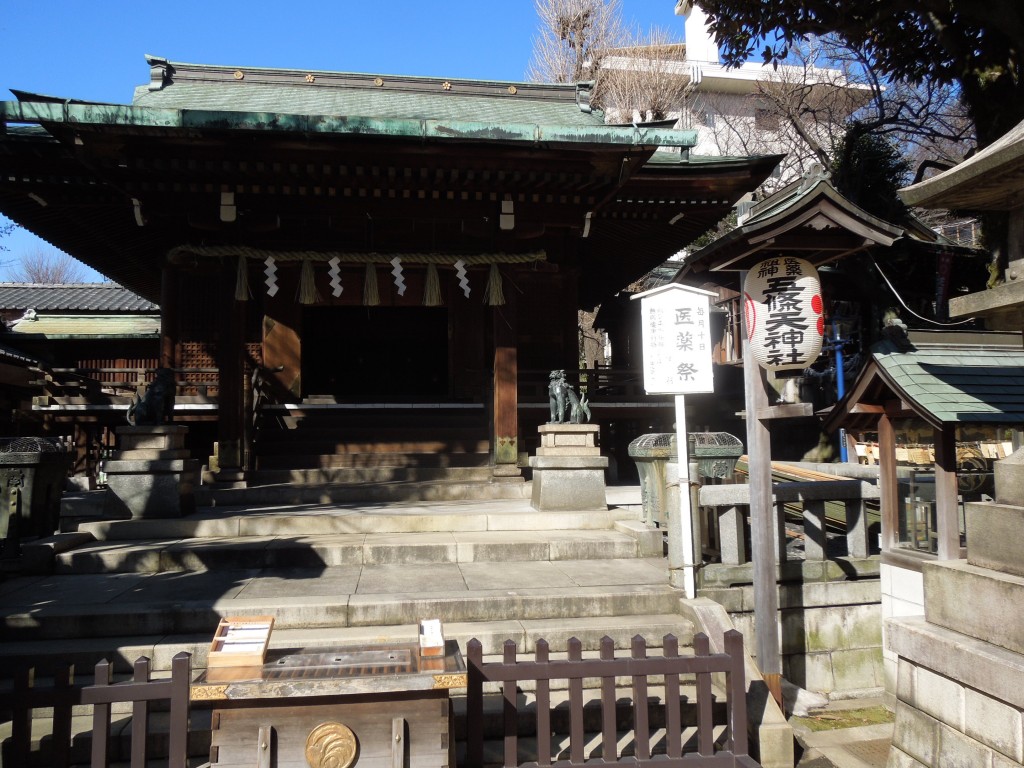
Gojouten Jinja, dedicated to medicine and healing. This is the place to come if you or your loved ones fall sick.
The other two shrines in the park now form a sort of unitary set, as they stand side-by-side. One is a simple shrine dedicated to medicine and healing, Gojouten Shrine. Every month on the tenth it has a medicine festival (iyaku sai). Shrine tradition says it was established about 500 years ago, and it moved to its present position in 1928. Like other healing shrines, it’s dedicated to Omamuchi and Sukunahikona no mikoto; in the Nihon shoki the latter is the assistant of Onamuchi in the making of Izumo and helps to heal illness among humans and their animals.
Adjacent to it is the Hanazono Inari Shrine, one of possibly 30,000 dedicated to the rice kami around the nation. Its origins are unknown, but Tokugawa Iemitsu received a message in a dream that he should rebuild it. In 1873 it was again rebuilt, renamed and later put together with the Gojouten Shrine. As well as the characteristic red torii tunnel and fox guardians, the most interesting feature is an Ana-Inari Shrine (or Hole Inari), built in a rocky recess to honour a fox which was displaced by the building of Kaneiji Temple – a welcome example of sensitivity to the plight of animals which one hopes has rubbed off on nearby Ueno Zoo.
***************************************************
For a sumptuous photo tour of Ueno Toshogu, see Joseph Cali’s Shinto Shrines blog here.
****************************************************
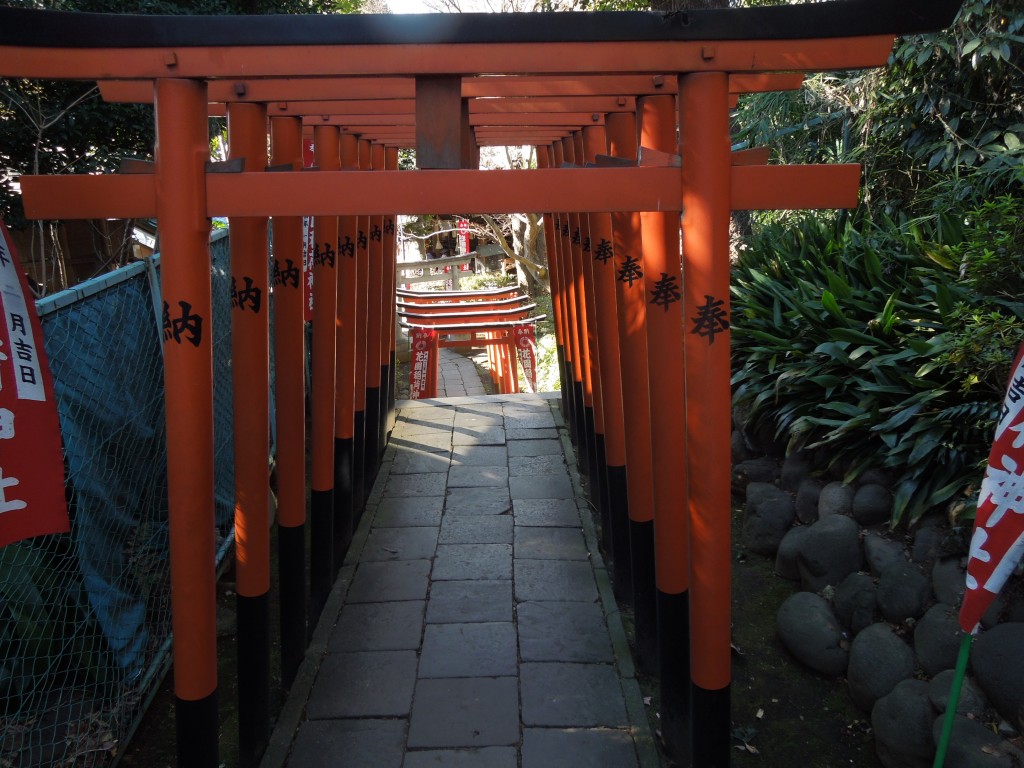
Torii tunnel leading to Hanazono Inari Jinja
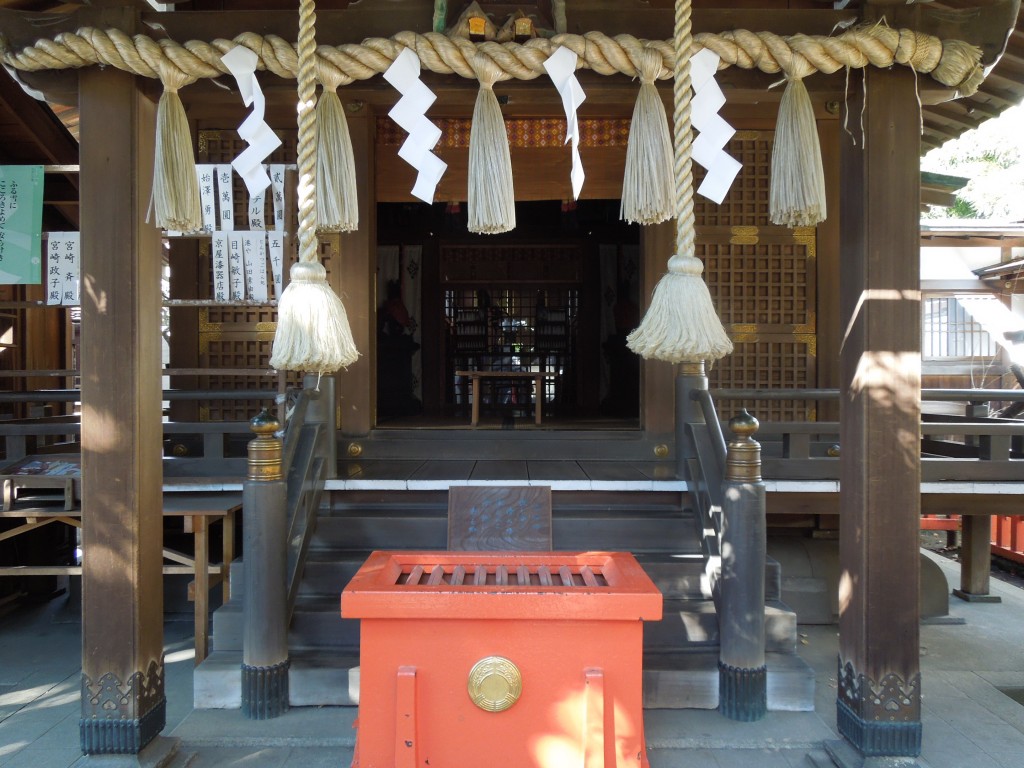
The Hanazono Inari Shrine worship hall
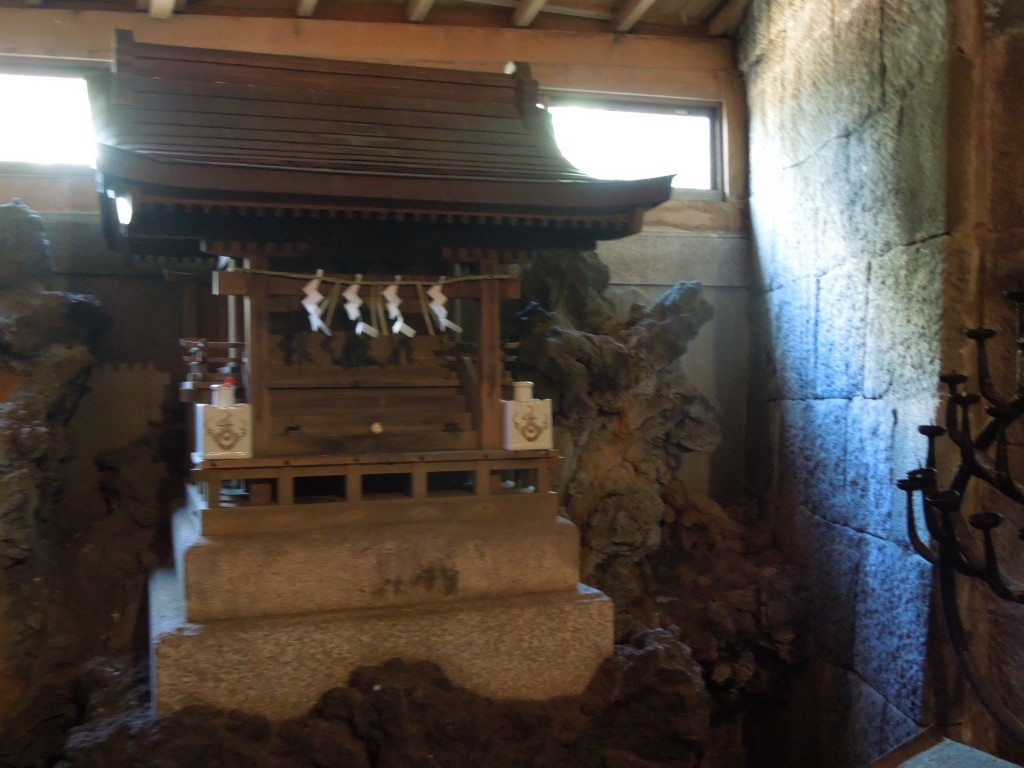
The Ana Inari Shrine (Hole Inari) built for a displaced fox

Hello! Do you use Twitter? I’d like to follow you if that would
be ok. I’m definitely enjoying your blog and look forward to new updates.
No, sorry Erin, no Twitter for Green Shinto but there is a Facebook page if you’d like to check there…